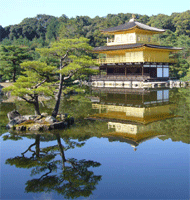Culture
Japan

- © UNESCO/G. Boccardi
- Kinkaku-Ji Temple
The preservation of heritage, in its intangible and tangible forms, constitutes one of the major areas of cooperation between Japan and UNESCO in the field of culture.
Japan, which claims eleven cultural sites and three natural sites on the World Heritage List, created a trust fund for the preservation of world cultural heritage in 1989. Through this fund, Japan has contributed to the restoration of Angkor in Cambodia and Bamiyan in Afghanistan.
Japan also invests heavily in the preservation of intangible heritage. Three artistic expressions from Japan have been proclaimed Masterpieces of the Oral and Intangible Heritage of Humanity: the Nôgaku Theatres (2001), the Ningyo Johruri Bunraku Puppet Theatre (2003) and the Kabuki Theatre (2005). In creating the Japanese Funds-in-Trust for the preservation and the promotion of intangible cultural heritage, Japan has demonstrated its commitment to recognizing the intangible dimension of cultural heritage. This fund has contributed to the elaboration of the Convention for the Safeguarding of the Intangible Cultural Heritage and has facilitated the creation of action plans aimed at preserving several of the proclaimed Masterpieces.
In the field of intercultural dialogue, the symposium designed to promote dialogue between Japan and the Arab world in 2004 contributed to the timely debate on cultural diversity and globalization.

